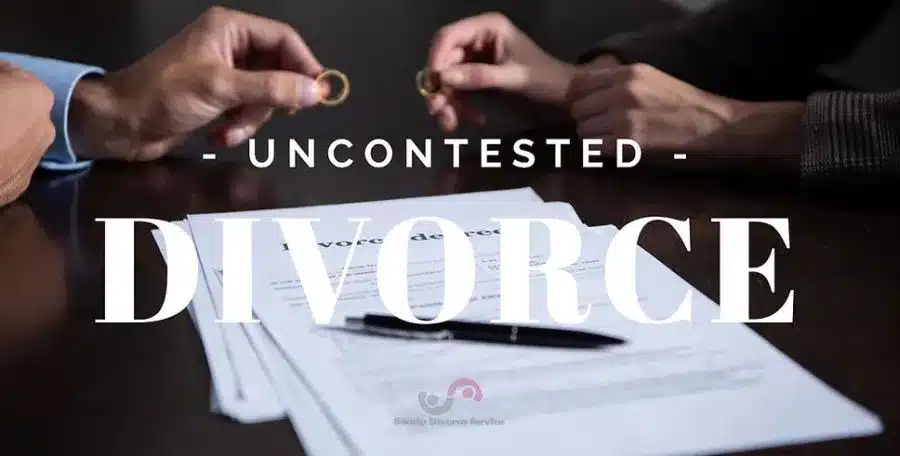When divorce papers are served in Texas, the initial legal document is called a petition for divorce, filed by the “Petitioner.” But what happens if the other spouse—the “Respondent”—disagrees with parts of the petition or wants to make their own claims?
That’s where a counterpetition comes into play.
In this guide, we’ll break down everything you need to know about how a counterpetition works in Texas divorce proceedings, including the legal purpose, strategic advantages, filing process, timeline, and practical tips. Plus, we’ll include a FAQ section and helpful takeaways for Texans navigating this part of family law.
💡 What is a Counterpetition in Texas Divorce?
A counterpetition is the Respondent’s official response in a Texas divorce case that goes beyond simply answering the original petition. While a “general answer” is the basic denial or acceptance of allegations, a counterpetition asserts the Respondent’s own claims against the Petitioner.
It allows the Respondent to:
- Ask for their own relief (such as custody, support, or property division)
- Disagree with or challenge the Petitioner’s proposed terms
- Protect their legal rights if the Petitioner dismisses the case
In short, filing a counterpetition makes the Respondent an active party in the lawsuit—not just someone reacting, but someone making demands of their own.
🧠 Why File a Counterpetition?
Here are the main strategic reasons to file a counterpetition in Texas:
1. Assert Your Own Legal Claims
You may want custody, child support, spousal maintenance, or a fair share of property. A counterpetition is your chance to legally request those outcomes.
2. Protect Against Dismissal
If the Petitioner voluntarily dismisses the original petition and you haven’t filed a counterpetition, the case is gone. If you have filed a counterpetition, the court will continue with your claims.
3. Establish Equal Standing in the Divorce
Without a counterpetition, you may appear as a passive party. Filing one tells the court you are actively pursuing your rights.
4. Negotiate from Strength
When both parties have filed competing claims, negotiations become more balanced. You’re not just reacting—you’re proposing terms.

📝 How to File a Counterpetition in Texas
Filing a counterpetition follows these steps:
Step 1: Respond to the Original Petition
You have until Monday at 10:00 AM after 20 days from the date of service to file your answer. This prevents default judgment.
Tip: Even if you plan to file a counterpetition, you must still file a general answer first.
Step 2: Prepare the Counterpetition
Use the standard “Original Counterpetition for Divorce” form. This document should include:
- Jurisdiction details
- Grounds for divorce (e.g., insupportability)
- Requested relief (property division, custody, etc.)
- Children-related provisions, if applicable
Note: Texas allows for both fault-based and no-fault grounds in a counterpetition.
Step 3: File with the Court
File your counterpetition with the same district court where the divorce was originally filed. You can file electronically through the eFileTexas.gov system or in person at the clerk’s office.
Step 4: Serve the Petitioner
You must serve your counterpetition on the Petitioner’s attorney (or the Petitioner directly if unrepresented), typically by certified mail or in person. Some counties may allow e-service.

🕒 Deadlines & Timeframes
- Answer deadline: Within 20 days + following Monday
- Counterpetition: Often filed with the answer but can be filed later
- Amending a counterpetition: Allowed anytime before trial, but may require leave of court close to hearing
🔐 Protective Features of a Counterpetition
Many people don’t realize that a counterpetition helps “preserve” your case. If the Petitioner withdraws their claim, the court still has jurisdiction over yours—this can be crucial in:
- High-asset divorces
- Child custody disputes
- Cases with protective orders or domestic violence concerns
Without a counterpetition, you lose the power to keep the court involved if the other party suddenly backs out.
🔄 Example Scenario: When a Counterpetition Helps
Let’s say your spouse files for divorce and requests full custody and all community property. You disagree and want:
- Joint custody
- A fair 50/50 property division
- Spousal maintenance
If you simply file a general answer, the case will proceed solely on their requests. But if you file a counterpetition, the court is now required to consider your desired outcomes. And if your spouse decides to dismiss the case? The court still hears your counterclaim.
✅ Tips for Filing a Strong Counterpetition
- Be Specific and Clear
Don’t just check boxes—state your positions on custody, visitation, property, debts, and spousal support. - Match the Language to Texas Family Code
Using legal terminology that aligns with the Texas Family Code makes your petition stronger. - Don’t Wait Until It’s Too Late
Strategic delays can cost you negotiating leverage. File early to protect your position. - Consult with a Legal Professional
Even in uncontested divorces, legal advice can prevent costly mistakes. - Keep Copies of Everything
File-stamped copies of your counterpetition, certificate of service, and all court communications are vital.
📚 Frequently Asked Questions About Counterpetitions in Texas Divorce
An answer is your legal response to the divorce petition (typically a general denial), while a counterpetition is your own divorce request that includes your claims and relief sought.
No. You are not legally required to file a counterpetition. However, it is strongly advised if you disagree with any part of the petition or want your own terms considered.
The court will still consider the counterpetition. If the Petitioner dismisses their petition, your counterpetition remains as the active case.
Yes. Texas rules allow amendments to pleadings (including counterpetitions) before trial. But late-stage amendments may require court permission.
Yes. The judge will evaluate all issues raised in both the petition and the counterpetition to reach a fair ruling on divorce, custody, property, and support.
📌 Final Thoughts
Filing a counterpetition in a Texas divorce is more than a procedural step—it’s a powerful tool that ensures your voice is heard in the outcome. Whether you’re seeking fair property division, parental rights, or spousal maintenance, your counterpetition puts your demands on record and gives you equal legal standing.
By understanding how and when to file it, and what to include, you gain strategic control over your divorce process and avoid being sidelined by a one-sided petition.
🗣️ Ready to File a Counterpetition in Texas?
If you’re facing divorce in Texas and want to protect your rights, Ready Divorce Service is here to help you file with confidence. We specialize in affordable uncontested divorces—including petitions and counterpetitions—across Dallas, Tarrant, Collin, Denton, Wise, and other counties.
At Ready Divorce Service, we help Texans get a divorce for a fraction of the cost of traditional law firms.
✅ Easy step-by-step guidance
✅ Flat-fee pricing — no surprises
✅ Support with filing and finalization
Let’s make your divorce fast, affordable, and stress-free.
🖥️ Start your divorce online today
📲 Call us now at (800) 432-0018






